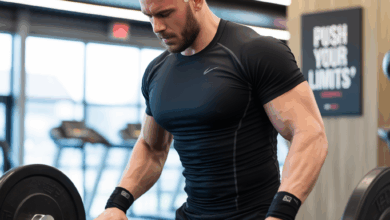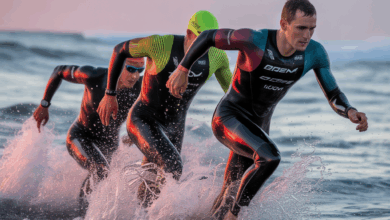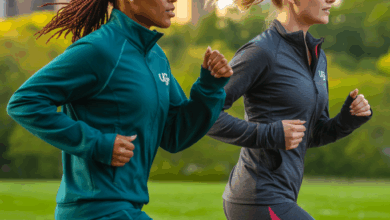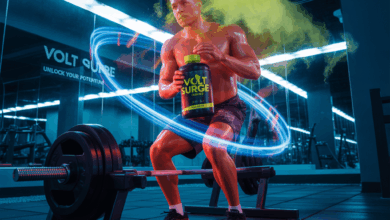Can You Workout With Shingles? Smart, Safe Ways to Stay Active While Recovering

Have you ever stared at your gym shoes and wondered, “Can I still work out with shingles?” Maybe the rash just appeared on your rib cage or neck, and you’re debating whether to push through a scheduled run or take a break. You’re not alone — many active people hit a crossroads when shingles strikes. This guide helps you make a safe, effective plan so you can protect your recovery without losing all your progress.
Can you workout with shingles? A quick, practical overview
Short answer: sometimes — but with important caveats. Whether you can exercise while you have shingles depends on how severe your symptoms are, where the rash and pain are, and whether you have fever or other systemic signs. Gentle, low-impact activity can support mood and circulation, but intense training or public gym sessions are often discouraged until you’re well controlled and your healthcare provider gives the go‑ahead.
Key factors to consider before moving
- Severity of pain and rash location — if your lesion is painful or in an area stressed by movement (e.g., torso or groin), limit activity.
- Systemic symptoms — if you have fever, chills, fatigue, or nausea, rest and see your provider.
- Contagion and hygiene — shingles can transmit varicella-zoster virus to those who haven’t had chickenpox through direct contact with the rash; avoid close contact and public locker rooms.
- Medication and side effects — antivirals and pain meds can help but may cause drowsiness or dizziness; adjust workouts accordingly.
How to stay active safely: practical fitness tips
You don’t have to completely stop moving — focus on preservation, not PRs.
1. Prioritize rest when needed
If you’re exhausted or running a fever, rest. Shingles is a viral reactivation and your immune system needs energy to heal. Resting now often shortens recovery time.
2. Choose low-impact cardio
- Walking at an easy pace (10–30 minutes) — great for circulation without stressing the body.
- Stationary bike with low resistance — if your rash isn’t in contact areas.
- Light elliptical or gentle pool walking — only if the rash is covered and your clinician approves.
3. Strength and mobility — keep it gentle
- Bodyweight moves with controlled tempo: glute bridges, wall push-ups, seated leg lifts.
- Isometric holds for strength without excessive movement.
- Short resistance band circuits (2–3 exercises, 8–10 minutes) to maintain muscle tone.
4. Add restorative practices
- Gentle yoga and mobility: Cat-Cow, Child’s Pose (if comfortable), neck stretches.
- Diaphragmatic breathing and guided relaxation to reduce pain perception and stress.
Real-world examples: workout variations that actually work
Here are three practical scenarios and simple routines that fit them.
Example 1 — Mild shingles, torso rash, low pain
- 10–15 minute brisk walk
- 2 sets: 10 glute bridges, 8 wall push-ups, 10 seated band rows
- 5 minutes of gentle stretching and breathing
Example 2 — Facial shingles, sensitive area, moderate fatigue
- Short indoor walk or marching in place for 8–10 minutes
- 10 minutes of gentle mobility: neck rotations, shoulder rolls, hip circles
- Rest and cool compresses for skin comfort; avoid sweating the affected area
Example 3 — Postherpetic neuralgia (lingering nerve pain)
- Low-impact strength twice weekly to support posture and reduce pain triggers
- Gentle stretching and nerve gliding exercises prescribed by a physio
- Mental health practices: meditation, short walks to lift mood
Nutrition, sleep, and lifestyle tips to support healing
Exercise is one piece of recovery. Boost healing with these evidence-based lifestyle choices:
- Nutrition: prioritize lean protein, colorful vegetables, healthy fats, and zinc-rich foods to support tissue repair and immunity.
- Hydration: aim for adequate fluids to help medication clearance and skin health.
- Sleep: 7–9 hours of sleep helps immune function — reduce late-night screen time and keep a cool, dark bedroom.
- Stress management: stress can weaken immune response; use breathwork, short walks, or gentle yoga to manage it.
Avoid these common workout mistakes with shingles
- Pushing through severe pain or fever — this can worsen recovery.
- Working out in public while rash is open — increases risk of transmission to non‑immune people.
- Overheating and excessive sweating — sweat can irritate the rash; opt for cooler environments.
When to see a doctor
Contact your healthcare provider if you experience high fever, spreading rash, severe pain not controlled by prescribed meds, eye involvement, or signs of secondary infection. Your doctor may prescribe antivirals (most effective early) and pain management strategies, and they can advise when it’s safe to resume full training.
Frequently Asked Questions
Shingles itself isn’t spread through the air like a cold — the varicella-zoster virus can be transmitted through direct contact with the open rash to someone who hasn’t had chickenpox or the vaccine. Avoid direct skin contact, public pools, and communal changing rooms until your lesions crust over. Always practice good hygiene.
It depends on your recovery. Many people resume moderate exercise within 1–3 weeks with symptom improvement, but full high-intensity training should wait until pain is controlled, fatigue has resolved, and your doctor clears you. Postherpetic neuralgia may require a longer, gradual return.
Intense or repetitive movement in the affected area can exacerbate pain. Gentle, low-impact activity often helps by improving circulation and mood, but always adjust intensity and stop if pain increases. Follow your clinician’s advice for pain management strategies.
Conclusion — can you workout with shingles? Make a smart, compassionate plan
Yes — in many cases you can continue light, low‑impact exercise while you have shingles, but you must prioritize rest, pain control, and infection precautions. Modify workouts, avoid public exposure if the rash is open, and listen to your body. If in doubt, check with your healthcare provider before returning to intense training.
Ready to keep moving safely? Try a short, gentle routine today and bookmark this page. For more ideas, check our workout routines, browse our nutrition guides, or read practical recovery suggestions on our wellness tips page. If your symptoms worsen, seek medical attention — recovery and strength go hand in hand.
Call to action: If this helped, share your experience in the comments or save this guide for your next plan. And if you’re unsure about exercising with shingles, schedule a quick check-in with your healthcare provider before lacing up.





